The Dearne and Dove Canal
Hoyle Mill to Stairfoot
Due to the increase in volumes of coal and iron workings in the area the Don Navigation Company agreed to build a canal from Swinton to Barnsley. This became known as the Dearne and Dove Canal. In part one of a series of articles Peter Hadfield looks at the development of the canal and the route it took from the aqueduct carrying the Barnsley canal to Stairfoot.
During the late 18th century, the road system in the West Riding of Yorkshire was in such an appalling state that it consisted mainly of mud tracks.
After opening their waterway to Tinsley in Sheffield the Don Navigation Company established a trans-shipment depot at Swinton as the road system was totally inadequate for the movement of goods. The Marquis of Rockingham had tentatively put forward the idea of making the River Dearne navigable to Barnsley as early as 1773, but the proposal came to nothing.
It was not until 1792 that shareholders of the Don Navigation Company agreed to build a canal from Swinton to Barnsley, in order to meet the needs of the increasing volumes of coal and iron works in the area.
As the Aire and Calder Navigation was already in the survey stages of constructing a canal from Wakefield to Barnsley (Barnsley Canal), time was of the essence for the Don Navigation Company to act quickly to progress with their £50,000 estimated proposal. Robert Whitworth senior under William Jessop’s supervision, was engaged to do the survey. Acts of Parliament for both canals were granted in June 1793.
The Dearne and Dove Canal was to run for 9.63 miles through Swinton, Wath, Wombwell and Stairfoot, where it would finally join the Aire and Calder’s Barnsley canal at Hoyle Mill.
Nineteen locks were needed to raise the level 127 feet from the River Don. Two branches were to be built, one to Elsecar, where six locks were needed in order to raise the canal 48 feet to the terminus basin, and the other to Worsbrough, which required no locks. The length of each branch was just over 2 miles long and two reservoirs, one at Elsecar and one at Worsbrough, were needed to feed the canal with water.
By December 1798 the canal was open to Elsecar, and the transport of coal from the colliery brought welcome revenue, as the construction costs had exceeded the original estimate.
On 12th November, 1804, the stop lock leading to the Barnsley Canal at Hoyle Mill was successfully flooded, therefore, the Dearne and Dove Canal was declared open.
Although the Barnsley Canal had been open for nearly three years, and was experiencing good trade, half the tonnage from the Barnby Basin of the Barnsley Canal used the Dearne and Dove, so the two companies began working together.
A shortage of water in the Barnsley Canal resulted in the Worsbrough Reservoir supplying water during December 1804 to February 1805
Later, in 1805 and 1806, the Dearne and Dove suffered water shortages which brought a stop to canal traffic, resulting in the increase in depth and acreage of Worsbrough Reservoir. Despite this, by 1828 the Dove and Dearne Canal had become rather prosperous in having nearly 150,000 tons of cargo, mainly coal, sent down the canal.
Unfortunately the canals were affected by the arrival of the North Midland Railway in 1840. The Don Navigation tried to protect its trade by buying both the Barnsley and Dearne and Dove Canals. Whilst the deal for the Barnsley Canal never materialised (as it was leased to the Aire and Calder Navigation Company), The Don Navigation was successful in taking over the Dearne and Dove canal on 1st January 1846.
Over the next 40 years, fortunes fluctuated. By an act of Parliament in 1889, the parent company which owned the Manchester, Sheffield and Lincolnshire Railway gained control of all South Yorkshire canals, which then adopted the familiar name of the Sheffield and South Yorkshire Navigation Company.
Coal extraction resulting in subsidence was the cause of the Dearne and Doves’s demise as it was resulting in too high maintenance costs. What was the reason for its construction, to transport coal, was to become its death knell.
In 1906, the Worsbrough branched closed followed by the Elsecar branch in 1928. The last boat made passage to Barnsley on the main line in 1934. Maintaining a navigable depth had become increasingly difficult.
All that remained open were canal paths from Barnsley to Barnsley Main Colliery, and the Swinton to Manvers Colliery. Sadly the Barnsley end of the canal closed in 1942 followed by the section to Manvers 10 years later in 1952. Only half a mile of the canal remained open thorough the first four locks, which served the former Canning Town Glassworks at Swinton. This section is still in water today, and the first two locks now form part of Waddington’s boatyard.
What remain of the Canal today?
We begin our journey at the Hoyle Mill section of the canal: there are the remains of the stop lock where the Dearne and Dove joined the Barnsley Canal, and for a further 200 yards or so, the canal bed part of the Dearne Valley Park, still exists.
Beevor Bridge has been underpinned, and the canal bed serving the former Woods Brothers Glassworks is now the car park for Potter Ballotini works. Construction of the new Tank Row road which leads to Barnsley Main Colliery spoil heap has left no trace of the canal, along with the demolition of the former Beatson Clark Glassworks and erection of warehousing. A small section of the canal remains before the former Stairfoot to Barnsley railway line, which has now become a cycle path.
Waterfield Place houses remain today, but the line of the canal totally disappears from here to The Keel pub. The pub’s garden and tables now settle upon the former canal and towpath.
After the road leading to the industrial park at Stairfoot, the canal bed remains and passes part of the former Tomlinson Glassworks and continues to the Cork Bridge which has sadly been demolished.
At this point the first stage of our journey concludes, the following section will cover the Stairfoot flight (Aldham eight locks) and Wombwell, and The Worbrough and Elsecar branches.
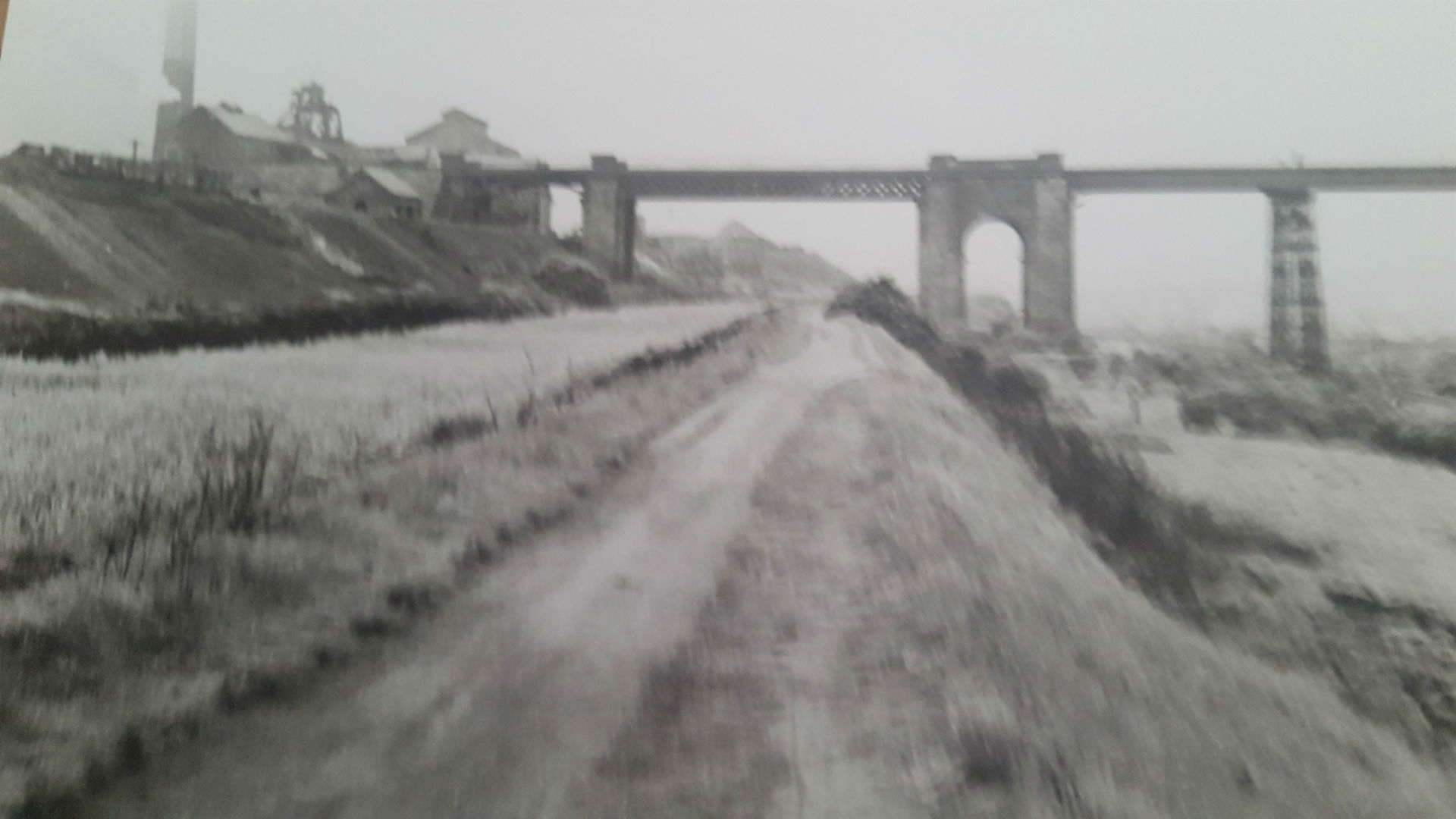
Oaks Viaduct Rail Bridge over Canal at Barnsley Main
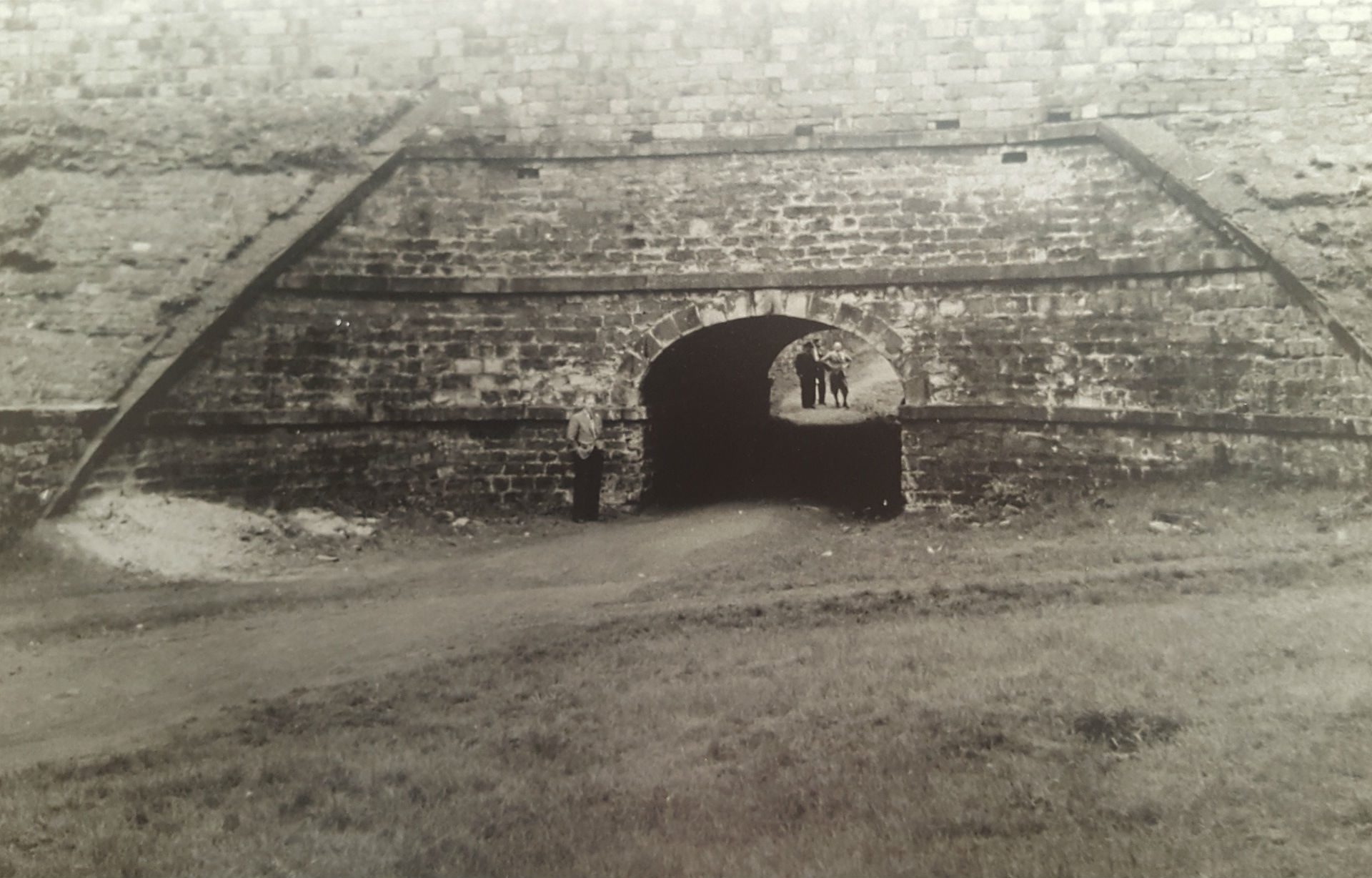
Aqueduct bridge over Tank Row
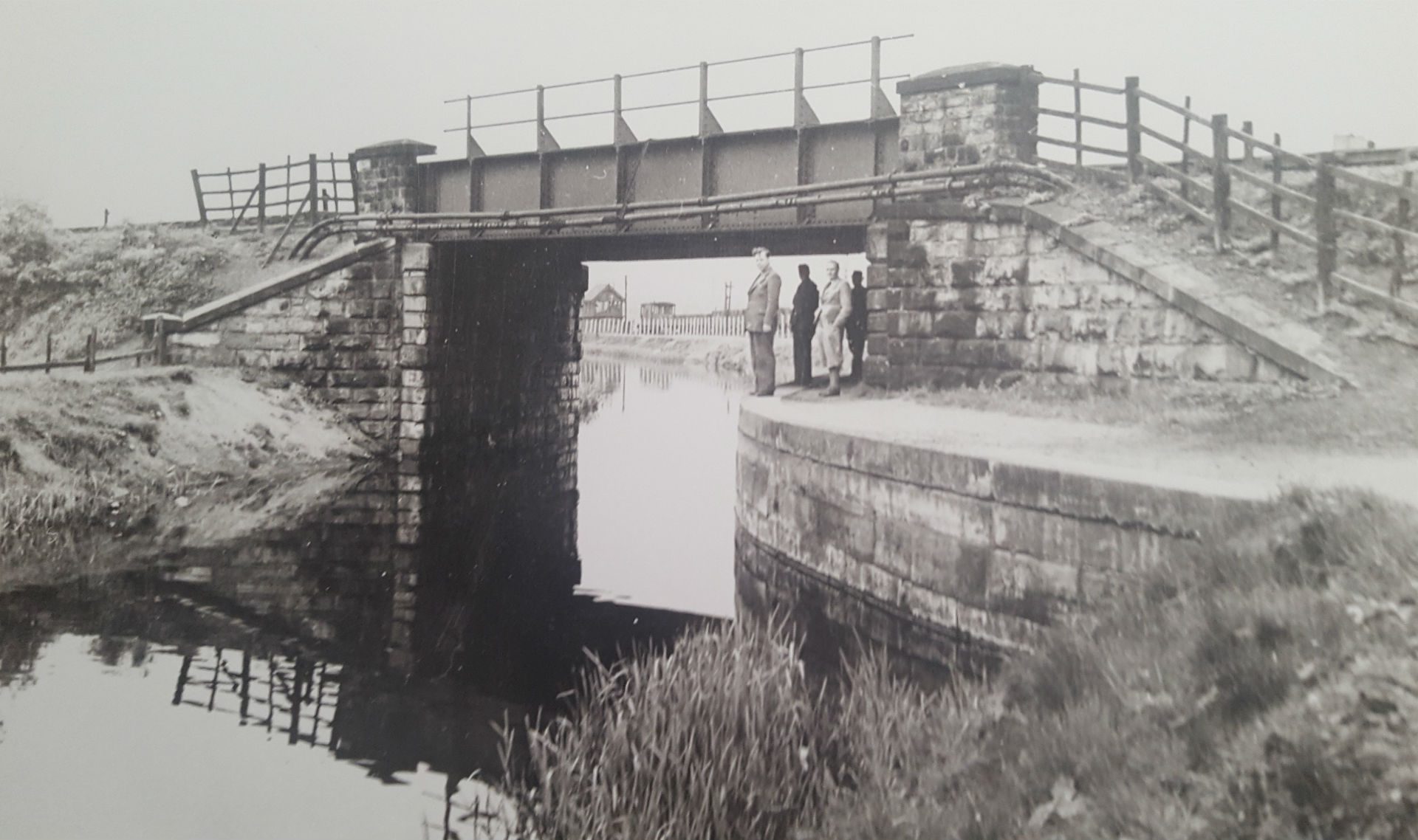
Barnsley to Doncaster Railway Bridge over Canal at Stairfoot
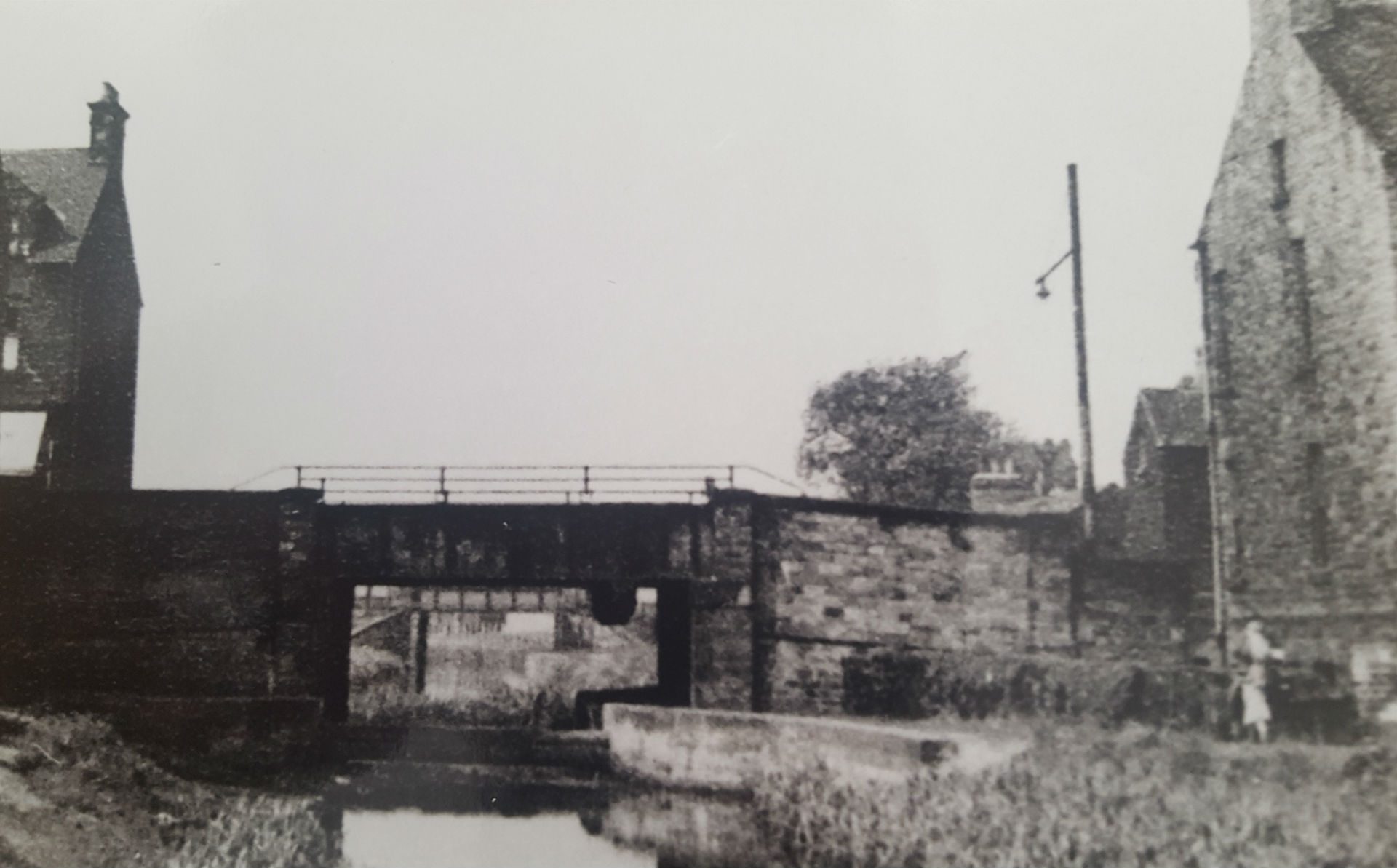
P4 A635 Road Bridge over Canal at Stairfoot
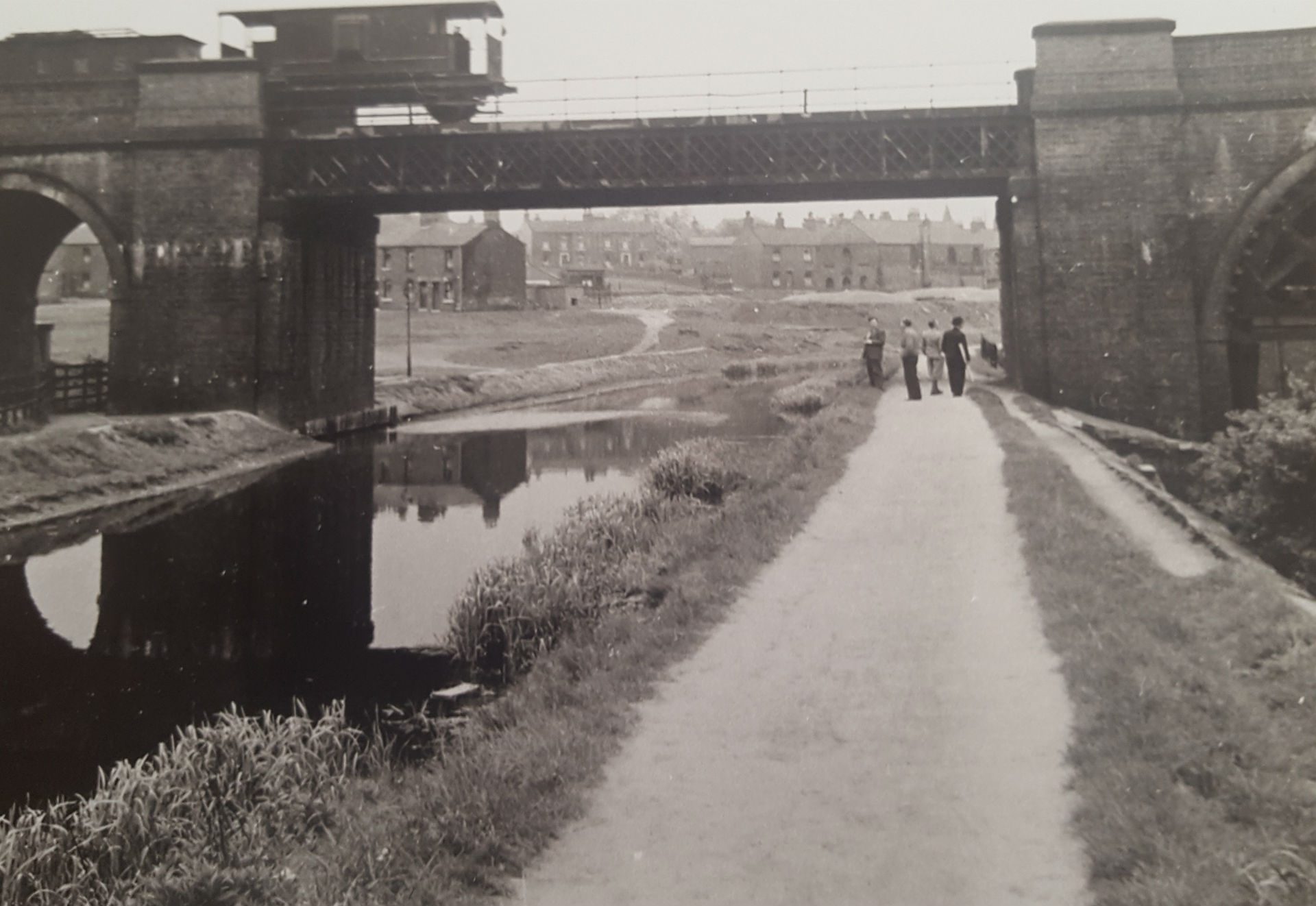
P5 Rail Bridge over Canal at Stairfoot
Stairfoot Station Heritage Park
Copyright © Stairfoot Station 2023 All right reserved.
Designed by Bits and Pieces Computers
